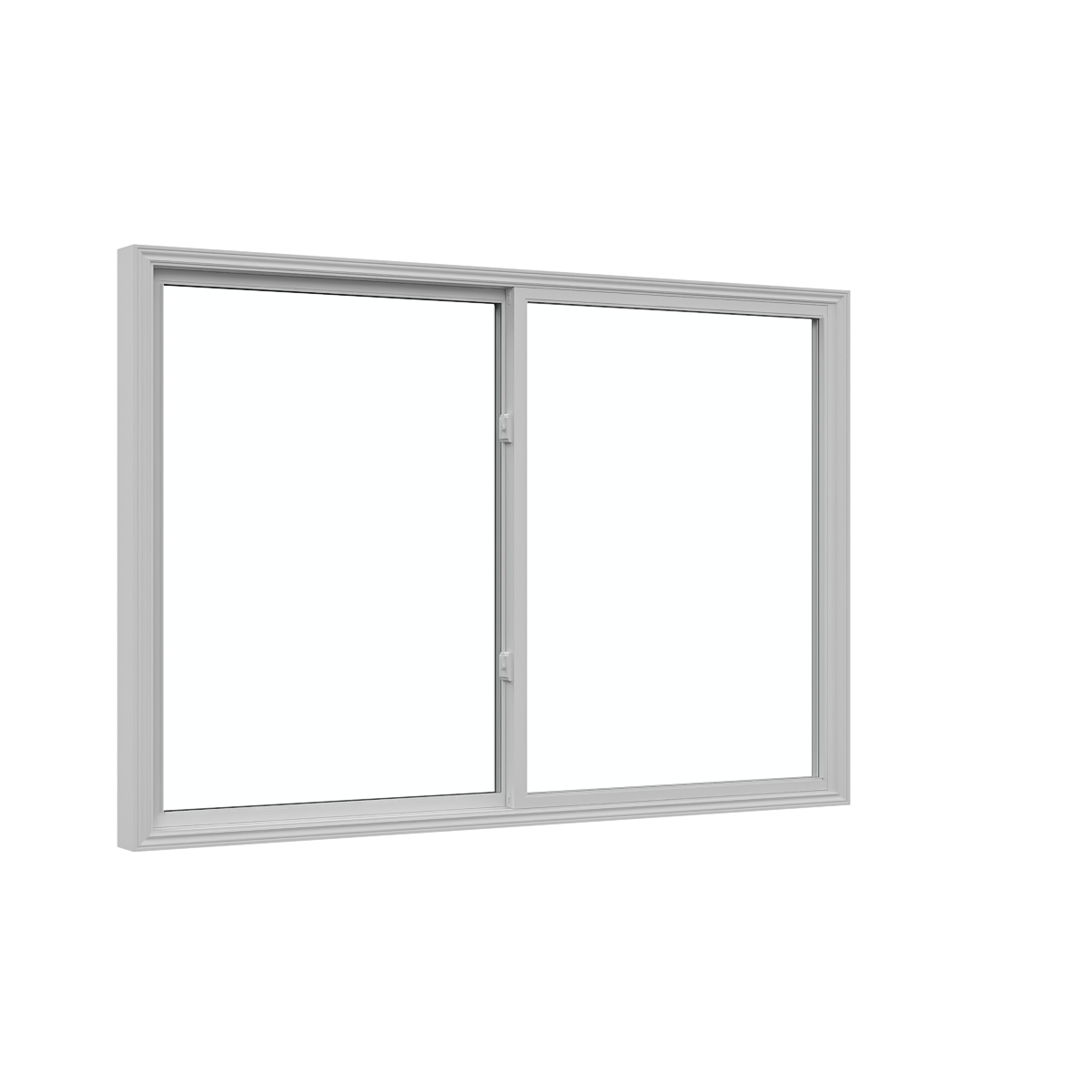
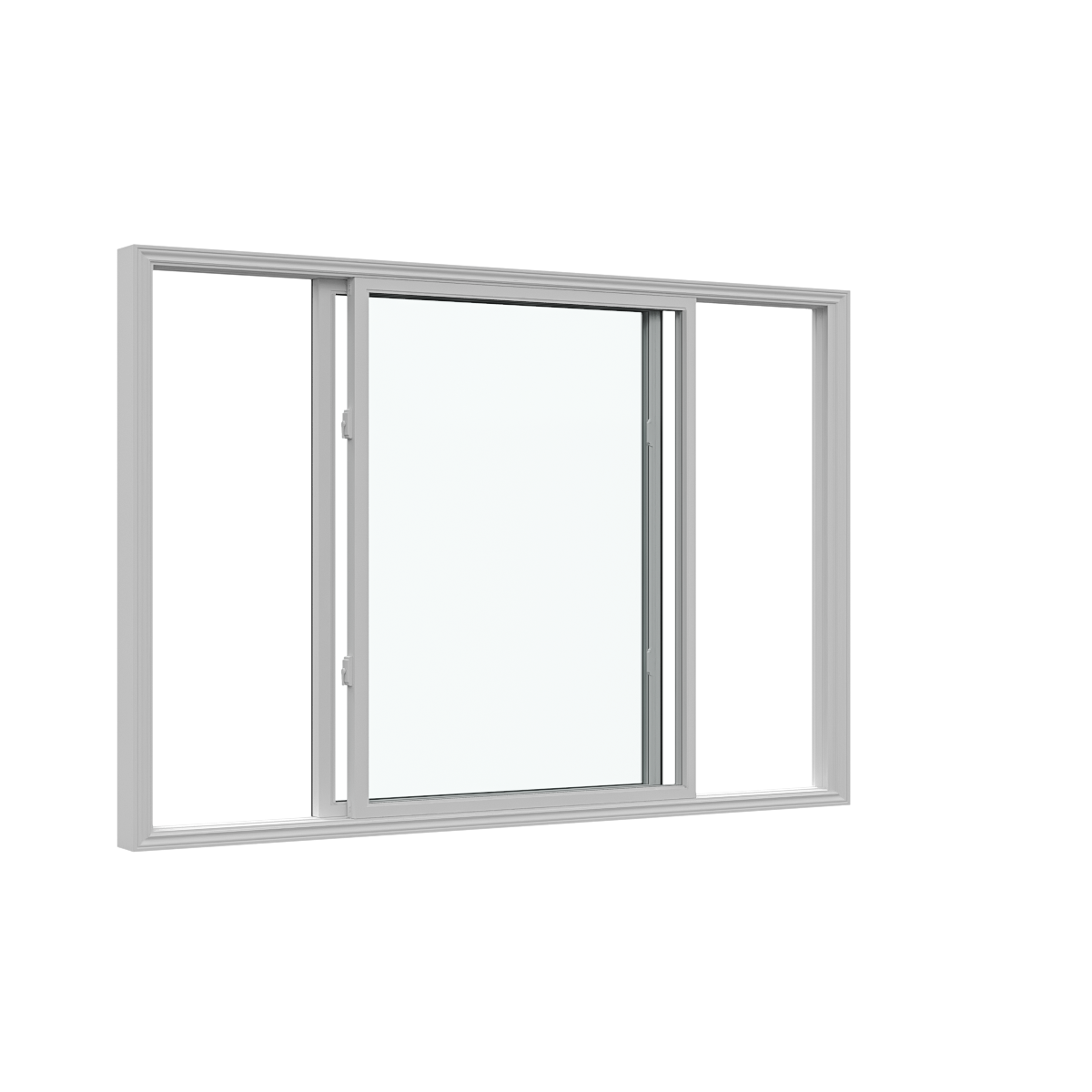

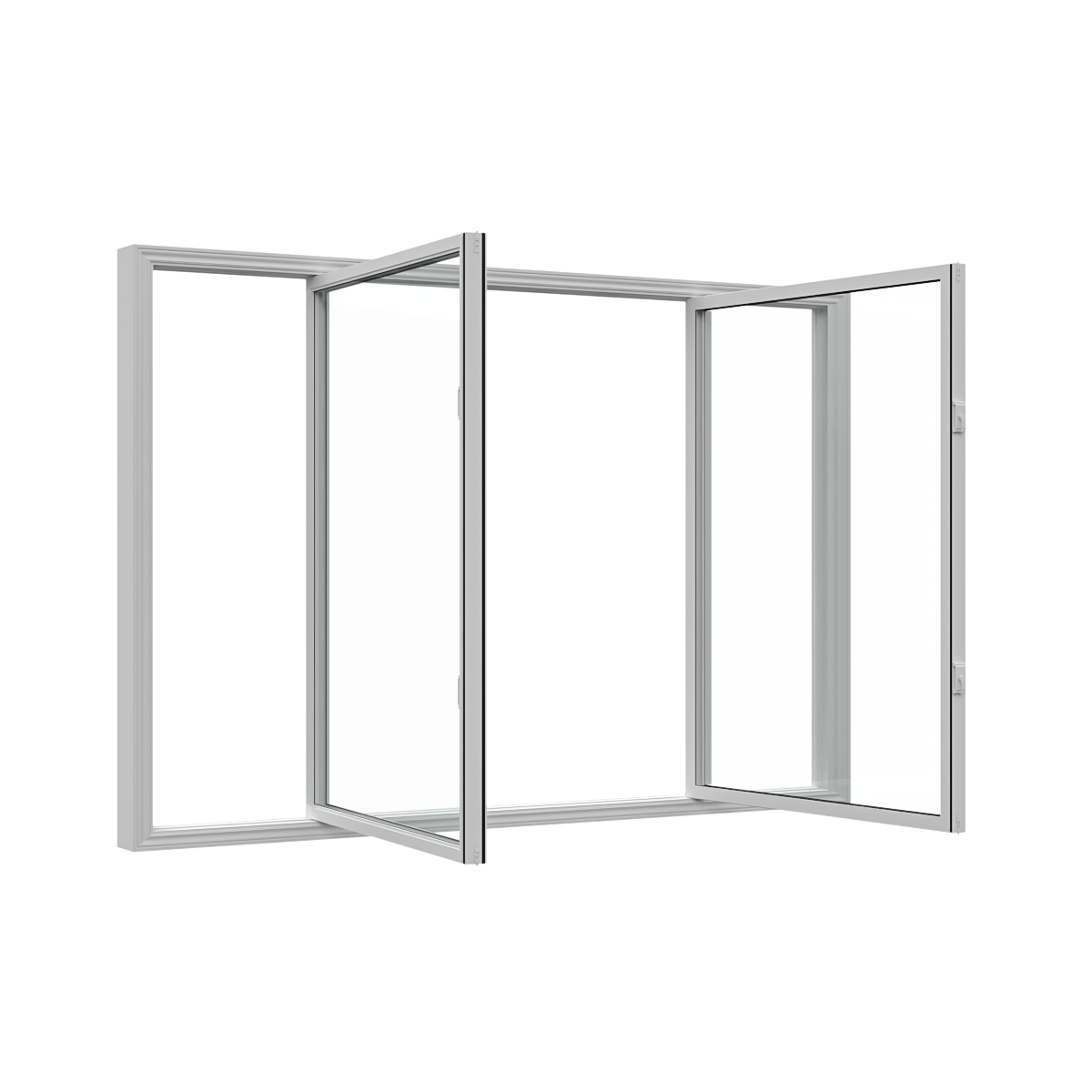

Realize All the Benefits of High Solar Gain Glass. LoE-180 is the perfect cold remedy. Ideal for passive solar applications, it allows winter sun’s heat to pass into the building while blocking heat loss to the outside. In a double-pane unit with argon fill, Cardinal LoE-180 glass delivers an ER of 45,U-factor of 0.26 and visible light transmission of 77%.
This means high levels of cold weather comfort for occupants. Moreover, the warmer indoor glass surface means relative humidity can be controlled and maintained properly, improving occupants’ comfort and surroundings. Building owners and/or managers benefit from significant energy savings. mayBecause LoE-180 transmits more natural light, architects may be able to reduce lighting loads, resulting in even more savings. Naturally saving energy is also good for the environment.
Cardinal LoE-180 glass can be supplied in stock sheets and can be tempered and laminated for stock delivery. Maximum stock sheet size: 96”x144» (2.43 meters x 3.65 meters).
Cardinal LoE Glass Sets the Standard for Energy-Efficient Glass. Our patented, state-of-the-arts puttered coatings are unmatched by any other glass manufacturer. These high-transmission coatings are virtually transparent, blocking the heat and reducing solar gain, while optimizing light transmission. Infact, our LoE2 and LoE3 coatings actually out perform tinted glass, which is often used.
Cardinal produces nearly 700 million square feet of coated glass annually, at seven coating plants across the U.S. Our Intelligent Quality Assurance Program (1.Q.) ensures the quality of every piece of glass. Using our patented inspection systems, we thoroughly examine the glass for exterior and room side colour, visible transmission/reflection, IR reflection and edge deletion.
How to use the wind load chart and design factors
Clear Glass unit provides more efficiency in noise protection than single-pane glass. A clear glass unit allows heat and cold air from inside and outside to pass through without resistance.
Cardinal Glass Industries is considered one of the world’s leading providers of superior-quality glass products. From the melting of sand to produce clear float glass to the vacuum sputtering of silver to produce low-emissivity coatings, Cardinal manufactures quality components and finished insulating glass products used in top-of-the-line buildings.

Get Superior Thermal Performance Year Around. LoE2-272 is ideal for any climate and weather. Just look at the numbers. In a double-pane unit with argon fill, Cardinal LoE2-272 glass delivers an SHGC of 0.40, U-factor of 0.25 and visible light transmission of 70%. All with no haze or bluish cast.
This means high levels of year-round comfort for occupants. Moreover, the warmer indoor glass surface means relative humidity can be controlled and maintained properly, improving occupants’ comfort and surroundings. Building owners and/or managers benefit from significant energy savings. And because LoE2-272 transmits more natural light and reduces solar gain, architects may be able to reduce lighting and air conditioning loads, resulting in even more savings. Naturally saving energy is also good for the environment.
Cardinal LoE2-272 glass can be supplied in stock sheets and can be tempered and laminated for stock delivery. Maximum stock sheet size: 96” x 144” (2.43 meters x 3.65 meters).
Cardinal LoE Glass Sets the Standard for Energy-Efficient Glass. Our patented, state-of-the-art sputtered coatings are unmatched by any other glass manufacturer. These high-transmission coatings are virtually transparent, blocking the heat and reducing solar gain, while optimizing light transmission. In fact, our LoE and LoE2 coatings outperform tinted glass often used.
Cardinal produces nearly 700 million square feet of coated glass annually, at seven coating plants across the U.S. Our Intelligent Quality Assurance Program (I.Q.) ensures the quality of every piece of glass. Using our patented inspection systems, we thoroughly examine the glass for exterior and room side colour, visible transmission/reflection, IR reflection and edge deletion.
How to use the wind load chart and design factors

Get the Perfect Balance of Solar Control and High Visibility. Just look at the numbers. In a double-pane unit with argonfill, Cardinal LoE3 -366 glass delivers an SHGC of 0.27, U-factor of 0.24 and visible light transmission of 63%. All with no interior-darkening tints and virtually no exterior reflectance.
This means a high levels of year-round comfort for occupants. Moreover, the warmer indoor glass surface means relative humidity can be controlled and maintained properly, improving occupants’ comfort and surroundings.
Building owners and/or managers benefit from significant energy savings.And because LoE3 -366 transmits more natural light and reduces solar gain, architects may be able to reduce lighting and air conditioning loads, resulting in even more savings. Naturally, saving energy is also good for the environment.
Cardinal LoE3 -366 glass can be supplied in stock sheets and can be tempered and laminated for stock delivery. Maximum stock sheet size: 96” x 144” (2.43 meters x 3.65 meters).
Cardinal LoE Glass Sets the Standard for Energy-Efficient Glass. Our patented, state-of-the-arts puttered coatings are unmatched by any other glass manufacturer. These high-transmission coatings are virtually transparent, blocking the heat and reducing solar gain, while optimizing light transmission. In fact, our LoE and LoE coatings outperform the tinted glass of ten used.
Cardinal produces nearly 700 million square feet of coated glass annually, at seven coating plants across the U.S. Our Intelligent Quality Assurance Program (I.Q.) ensures the quality of every piece of glass. Using our patented inspection systems, we thoroughly examine the glass for exterior and room side colour, visible transmission/reflection, IRreflection and edge deletion.
How to use the wind load chart and design factors

Double-pane windows become triple-pane performers
There i’s no need to go to triple-pane windows to meet the various energy-saving guidelines. No need to invest in redesigning your windows and altering your manufacturing processes either.
A double-pane IG unit with LoE-i89 can meet the guidelines.
LoE-i89 is sputtered onto the indoor lite, the #4 surface, thus reflecting escaping heat back into the room and lowering U-Factors. Coupled with our LoE2 or LoE3 glass and argon fill, this
double-pane unit delivers performance much better than clear triple-pane — a centre of glass U-Factor of just 0.20 compared to 0.37 with clear triple-pane.
To surpass the U-Factor performance of our LoE-i89 double-pane unit, you would need to go to a triple-pane unit with a low-E coating in each gap.
Super spacer. is the winning choice for the industry’s most durable insulating glass units
Warm edge technology is more than a low-conductive product that helps make windows more thermally efficient. The warm edge spacer is the seal that keeps the glass package in windows from falling.
Two types of insulating glass systems are on the market today: Single-seal and dual-seal systems. Single seal units are constructed of only one type of sealant, which is called upon to perform
double-duty. Not only must the sealant retard the infiltration of moisture vapour, but it must also hold the unit together under a wide variety of both high and low temperatures while withstanding
the effects of high humidity and ultraviolet exposure.
A dual-seal unit is constructed using a combination of a sealant that functions mainly as a high-strength adhesive and a second sealant, primarily used as a moisture vapour seal.
Super spacer® is a dual-seal insulating glass system. This NO-Metal, structural foam spacer resists condensation, reduces energy costs, provides long-life durability, and adds comfort and value to
your windows.
Protect your most precious possessions - choose Health Smart Windows for your home and family.
The all-foam formula of Super spacer® is proven to be less conductive, which can block heat from escaping or entering through the glass edge. It provides optimal thermal performance and is the lowest
U Value in the industry.
Vinyl Pro is one of a few manufacturers carrying this product.
Many of today’s energy-efficient windows offer glass packages with «Warm Edge Technology». The problem is that highly conductive metal-based insulating glass spacers are often used in these new
windows.
A new window can lose up to 50% of its overall stated R-value with a metal-based spacer at the edge of the glass. R stands for the «resistance» of transferring heat or cold through a solid object.
So, a higher R-value means better insulation against heating and cooling loss.
The edge of the insulating glass is the most vulnerable to heating and cooling loss. This usually leads to condensation. It’s a problem that looks unsightly over time, it will stain wood, peel
paint and rot frames.
Not only that, but window condensation can contribute to mold growth, a sinister presence hidden from sight deeply inside window and wall openings.
Visible mold can often be found in poorly insulated or installed windows. Mold is being linked to child asthma, plus increases in general respiratory illness, allergies and outbreaks of fungal
diseases.














Our vinyl windows come with various interior vinyl trim options for refined and versatile styling. We combine advanced technology with the finest materials for durable, flawless finishes that will
retain their colour year after year. Standard finishing options include wood stain and contemporary and classic rosettes, but we can also accommodate custom colours.
We offer four standard vinyl jamb sizes to facilitate a seamless window installation. We can also provide wood jamb extensions, frame moldings and corner blocks for added flexibility. These interior
finishing options are made from a durable lead-free PVC powder compound that requires no maintenance.
We craft our brickmoulds from a durable uPVC powder compound designed to stand up to the harshest elements. This maintenance-free material is available in various sizes and colours for
long-lasting curb appeal.
Vinyl Pro uses Prolux paint, a leader in technology and innovative products for the liquid paint market. Prolux produces coatings for many substrates, including a superb line of paints formulated
exclusively for PVC.
All our colour window frames are coated with four layers of paint for lighter colour, and six layers for darker colour. In comparison, industry standards with two coats for a lighter colour and three
coates for a darker colour are applied.
Ever wonder why condensation forms on your windows — and what you can do to prevent it? Below is a collection of questions and answers designed to provide you with a better understanding of condensation and how you can minimize it.
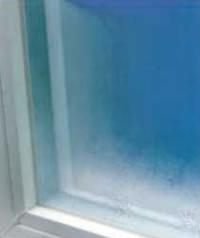
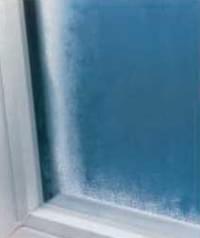
What causes exterior condensation?
Condensation often occurs during colder weather when the moist air inside the home comes into contact with cooler surfaces. The moisture in the air can condense to form water droplets
or even frost. The risk of condensation increases as the weather gets colder and/or the inside humidity rises. Condensation can form:
What causes exterior condensation?
Condensation often occurs during colder weather when the moist air inside the home comes into contact with cooler surfaces. The moisture in the air can condense to form water droplets
or even frost. The risk of condensation increases as the weather gets colder and/or the inside humidity rises. Condensation can form:
What Causes condensation on the inside glass of the window?
Exterior condensation occurs when moist air comes into contact with cool surfaces, such as glass. This type of condensation appears when the dew point in the air is higher than the temperature of the glass. This occurs when a cool night follows a warmer day, typically during spring and fall.
Where on a window does condensation usually form and why?
Condensation is a result of temperature differences between the outside and inside. In the summertime, if condensation occurs, it will be on the outermost pane of your window as now your home is likely cooler than the warm air outside. This is also a result of the temperature difference.
Can I reduce the condensation on my window?
Condensation in a home can be stopped by reducing humidity and increasing ventilation. Less humidity in the air means less water vapour to turn into condensation. Increased ventilation provides a way for water in the air to escape.
What steps can I take to reduce humidity in my house?
There are simple steps you can take to avoid or reduce condensation, for example, early morning exterior condensation.
1. Buy high-performance ENERGY STAR® certified windows, doors and skylights. They are more energy efficient and have less condensation compared to ordinary models. They are more energy efficient and have less condensation compared to ordinary models. Features that contribute to better energy efficiency are:
Note: Low-e coatings on high-performance windows make the glass more energy efficient by reducing heat loss. However, if the night has been cool and calm and the air is humid, condensation may form on the outside surface of the glass around sunrise. Also, there is a higher risk of condensation if the low-e coating has been applied to the room-side surface of the glass.
2. Proper air circulation near windows is also necessary to minimize condensation. Airflow across the glass surface helps keep it warmer, which is one reason heat sources such as central heating vents and electric baseboards are located beneath windows in many homes. Deep window sills, closed drapes and blinds, and even nearby furniture can block air movement and allow cool air to pool near a window, leading to condensation on the glass.
3. Make sure your Heat Recovery Ventilator (HRV) is on if you have one.
